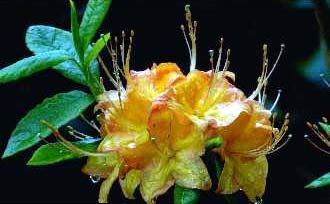Pulling weeds is a burdensome job that no one enjoys. However, it is as much a part of gardening as planting and harvesting. Persistent weeds are especially irksome as they compete with garden plants for space, light, and nutrients.
Just as the occurrence of weeds is entirely natural, so must the removal and prevention of weeds become a natural part of your gardening routine. A garden free of weeds is healthier, more attractive, and more productive.
Use Herbicides Sparingly
Although herbicides were once thought to be nontoxic to humans, this has recently been challenged by new information. A number of commonly used herbicides have recently come under suspicion as being carcinogens or mutagens. If herbicides are used excessively or too frequently, or if they are carried by the wind or used too near a desirable plant, they may also kill a favorite bush or plant along with the weeds. Further, there is evidence that herbicides impede root development of desired plants. While you may need to use herbicides occasionally, it is best, whenever possible, to find a non-chemical solution to your weed problems.
Alternatives
There are a number of ways to control weeds without chemicals. In uncultivated areas, ground covers will keep persistent weeds from developing while simultaneously controlling erosion. In cultivated areas, the most effective, non-chemical methods of weed control are mulching, hand-weeding, and hoeing.
Advantages of Mulching
A deep, 4 to 5-inch layer of mulch will not only control weeds, but it will also make those weeds that do grow easier to pull. Mulching also reduces evaporation, increasing the moisture of the bed. It can even be used as an attractive addition to the garden landscape. Usually, mulch material improves soil structure and fertility and insulates plants from extreme weather.
Some commonly used organic mulch materials are bark, cocoa bean hulls, compost, grass clippings, peat moss, pine needles, and sawdust. In mild winter areas, apply mulches after the ground has warmed up in the spring. Dig in the mulch in late autumn. In cold winter areas where the ground alternately freezes and thaws, apply a thicker layer of mulch before the first severe frost. Remove mulch after frost danger has passed, and apply a fresh layer just before the summer heat peaks. Mulch must be at least 3 inches deep to hinder weed growth. While mulching requires more effort than applying a quick dose of herbicide, it is clearly more advantageous, as it provides so many other benefits in addition to smothering weed seeds.
Hand and Hoe Weeding
Hand and hoe weeding are the most basic methods of weed control. Hand weeding can be tedious, but it provides an opportunity to get acquainted with what is happening in your garden. Hand weeding is essential among shallow-rooted plants such as azaleas and rhododendrons. Inspect your garden every few days; get down on your hands and knees to pull out sprouting weeds. Check for plant damage and new insect populations as well.
Weeding Tools
Hoeing is also helpful in the effort to control weeds, but only where there is no danger of damaging surface roots. Breaking up the soil surface not only discourages weeds, but it also provides better aeration and moisture penetration.
Weeding tools generally come in two types - hoes and forks. Particularly useful for cutting young weeds off at the base is the scuffle hoe, a tool with a hoe-length handle and a flat cutting blade that moves back and forth. The long taproots of perennial weeds can be loosened with a weeding fork. A metal prong attached to a two-foot-long handle, the weeder fork is also useful for loosening the soil around more fibrous rooted weeds so that the entire root system can be removed. Both of these tools, along with other hoes and forks, are readily available at nurseries.
TIPS: DEEP-ROOTED WEEDS
Deep-rooted weeds are especially difficult to combat. Canada thistle (Cirsium arvense) and European glorybind (Convolvelus arvensis) have roots which can burrow as deep as ten feet. The roots of these weeds must be dug up completely in their infancy.
Goutweed (Aegopodium podagraria), dandelion (Taraxacum officinale), and plantain weed (Plantago) are fast-spreading lawn weeds. Goutweed and dandelion roots are self-regenerating; if even a tiny portion of the plant is left in the ground, new plants will form. Be extremely careful to remove the entire root when digging up these particular weeds.
Pesticides and herbicides not used according to label direction can be harmful to humans, animals, and plants. Only use products that have directions for home and garden use.
STEPS TO COMBAT PERSISTENT WEEDS
Remove weeds from problem areas by turning over the soil repeatedly. Be careful to dig up every bit of each weed, including roots.
In vegetable gardens, control weed growth by mulching and covering the soil in between rows with black mulching plastic.
Place a 3-inch layer of mulch beneath shrubs and trees. Mulching discourages weeds from growing and makes them easier to remove.


